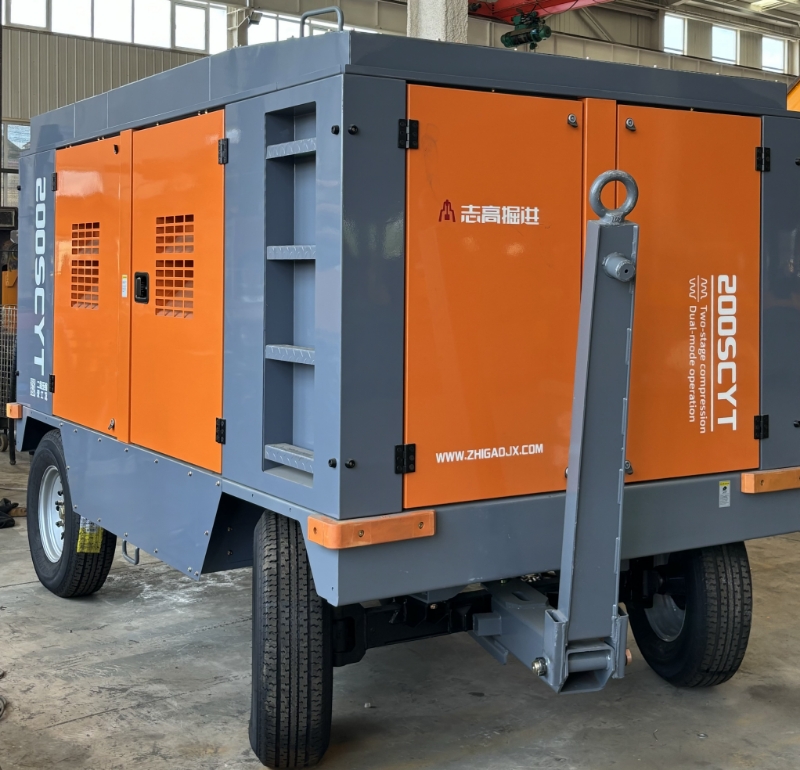How Air Compressors Function in Water Well Drilling
This compressed air is then released under pressure to power the drilling equipment effectively.
A typical air compressor system in water well drilling consists of several key components.
The compressor unit is, of course, the main part that compresses the air.
It is connected to a receiver tank, which stores the compressed air, ensuring a steady supply during the drilling process.
Pressure gauges are installed to monitor the air pressure, allowing operators to maintain optimal conditions. Hoses are used to transport the compressed air from the tank to the drilling tools, such as hammers and bits.
Kur shponi, the compressed air creates a percussive action through the drilling tool.
This action is extremely effective in breaking up rock or soil formations.
As the drill bit penetrates the ground, the compressed air forces the cuttings (small pieces of rock and soil) to the surface through the annular space between the drill pipe and the borehole walls.
This continuous clearing of cuttings is essential for maintaining the stability of the borehole and ensuring that the drilling process can progress smoothly.
Without the proper functioning of the air compressor to remove these cuttings, the drill bit could become clogged, and the drilling operation would grind to a halt.

 Mantel shpimi bangxin
Mantel shpimi bangxin